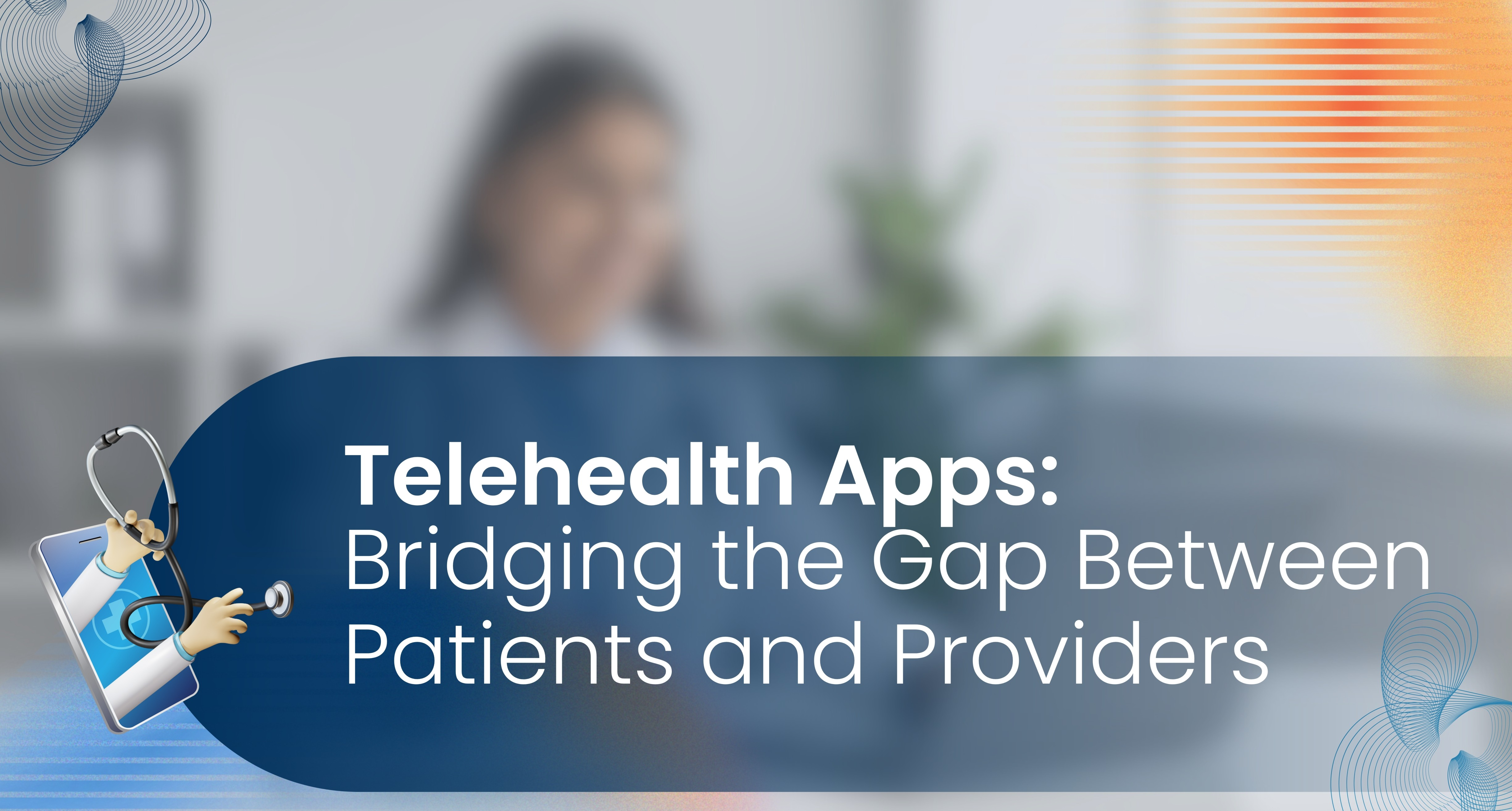Atul Goel
With technology everywhere now, healthcare is affected as well. Telehealth apps have allowed for a new way of connecting patients and doctors. Through digital platforms, people can reach healthcare services easily and receive a more personal kind of care. During our discovery of telehealth, we will look at new ideas, what is trending now, and how these applications are impacting relationships between patients and healthcare providers.
The Rise of Telehealth
Most of the time, telehealth is interchangeable with telemedicine and refers to different tools assisting remote medical care. With the rise of both online meetings and mobile health apps, telehealth has become very important since the start of the COVID-19 pandemic. The coronavirus made it essential for people to stay apart, which helped show that these technologies bridge healthcare issues. Developing a robust and compliant Application for the Healthcare Industry became an urgent priority globally
Before the pandemic, telehealth’s popularity was increasing, but it grew at a slow pace. McKinsey & Company reports that telehealth was used 38 times more in the United States after the pandemic started. It proved that more people need remote healthcare and are prepared to use it, as are healthcare providers.
How Telehealth Apps Work
Digital platforms that connect patients with healthcare professionals via means like video calls, messaging, and remote monitoring are called telehealth apps. The quality of App Development Services behind these platforms is crucial for success. Patients can now do all from the comfort of their own place, be it scheduling appointments, receiving diagnoses, or even managing prescriptions. Individuals seeking to avoid the hassle of traditional in-person visits often find this beneficial!
The UX of these apps is straightforward, as simple as patients downloading the app, creating their account, and filling in their health information.
All they have to do is browse healthcare professionals, schedule appointments, and communicate with their chosen professionals. Features that further enhance these apps are medication reminders, health tracking, and educational resources, further elevating the patient experience.
Recent Examples of Telehealth Apps
There are many telehealth apps catering to diverse patient needs that have gained prominence in recent years. Finding a reliable App Development Company is key to launching a successful platform. Some of them are :
1. Teladoc: One of the first telehealth companies, Teladoc gives patients access to general medical appointments, mental health care, and care for chronic diseases. Anyone can quickly contact a licensed health expert through the app’s user interface. The company has seen over 50 million visits since it began, which demonstrates how it is accepted by many.
2. Amwell: This company helps you with urgent care, mental health, and nutritional advice. Connecting the app to many health systems makes it possible to view medical records without interruption. Because Amwell is chosen by many employers and health plans, it is a leading option for those using telehealth.
3. Doctor on Demand: With Doctor on Demand, you can talk to licensed doctors and therapists over video. For typical medical problems that aren’t urgent, the clinic allows patients to obtain treatment right away. There has been a huge rise in the use of telehealth through Doctor on Demand, with visits increasing by an amazing 600% during the pandemic.
4. Doxy.me: Doxy.me was created for healthcare professionals and provides a simple and safe way to conduct telemedicine consultations. Because it is so easy to use and meets HIPAA guidelines, doctors often use it. Thousands of healthcare providers use Doxy.me to help with remote care.
5. MyChart: Healthcare systems have built their telehealth apps like MyChart, which help patients view their health records, make appointments, and talk to their medical teams without visiting in person. Many patients now use MyChart to keep track of their health in one place.
Trends in Telehealth
As telehealth continues to evolve, the demand for sophisticated App Development Services is growing, shaping its future:
1. Increased Adoption of Remote Monitoring
More healthcare providers are choosing remote patient monitoring to keep track of patient health as it changes. Wearable trackers and smartwatches can share details on your heart rate, blood pressure, and important health numbers, so you can deal with chronic diseases ahead of time. The global remote patient monitoring market is likely to increase to $2.4 billion from now to 2026, due to demand for these services.
2. Integration of Artificial Intelligence
Telehealth services are being greatly improved by artificial intelligence (AI). Checking for symptoms is made easier for patients by chatbots and machine learning algorithms can advise on the best treatment for each person. Besides improving how we work, this technology also improves the experience for patients. It can support the sorting of patients by their symptoms and safely send them to the healthcare facility best suited to their needs.
3. Focus on Mental Health
Because of the pandemic, more people are recognizing the need for psychological services, which has resulted in an increase in telehealth. Mental health is now easier to get thanks to BetterHelp and Talkspace, which connect users with experienced therapists.
4. Regulatory Changes
More and more, governments and healthcare organizations are acknowledging telehealth, and the rules concerning it are being changed to help it grow. It is becoming simpler for telehealth providers to serve more people, thanks to these new regulations.
5. Emphasis on Patient Management
Plenty of telehealth apps now prioritize getting patients more involved in their health. Patients can use educational information, prompts to stick to their medications, and tools to help them achieve their health planning, allowing them to play a bigger role in caring for their well-being.
The Human Connection in Telehealth
Telehealth depends highly on new technology, but the human connection is still central. They are intended to assist in the creation of patient-provider relationships and keep care both effective and humane. Having video consultations helps people develop trust and rapport, important for good healthcare.
Providers may use technology to show they understand their patients, pay attention to what patients share, and customize services. Communication with a patient often becomes richer when you can notice their facial signs and how they speak, which isn’t possible in other ways.
Challenges and Considerations
Nevertheless, there are some difficulties with using telehealth apps. When people, for any reason, can’t use the Internet well, don’t have access to technology, or are worried about how their data is protected, health services apps can’t help them as much. Ensuring the security and accessibility of the Application for the Healthcare Industry remains paramount. It is important for healthcare teams to remove these problems by supplying assistance and resources for better telehealth access.
Even though telehealth is useful for many healthcare needs, it does not apply to every situation. Providers should decide, with their experience, which patients require face-to-face care.
Conclusion
Such apps are revolutionizing the health industry by closing the gap between patients and doctors in new ways. By improving how accessible they are, encouraging patient participation, and building important connections, digital platforms are changing the way patients interact.
Because of advancing technology, hiring a specialized App Development Company is seen as a valuable and promising way to help people and build a healthcare system around patients. Helping this evolution will not only benefit each person but also help the whole society become healthier.









